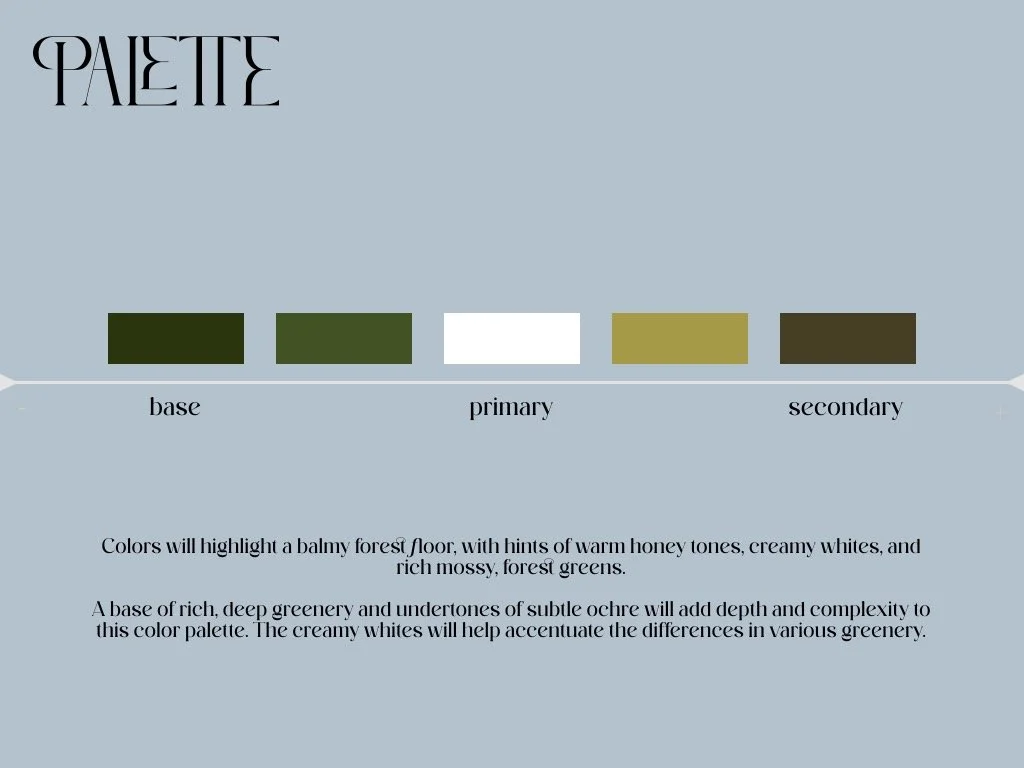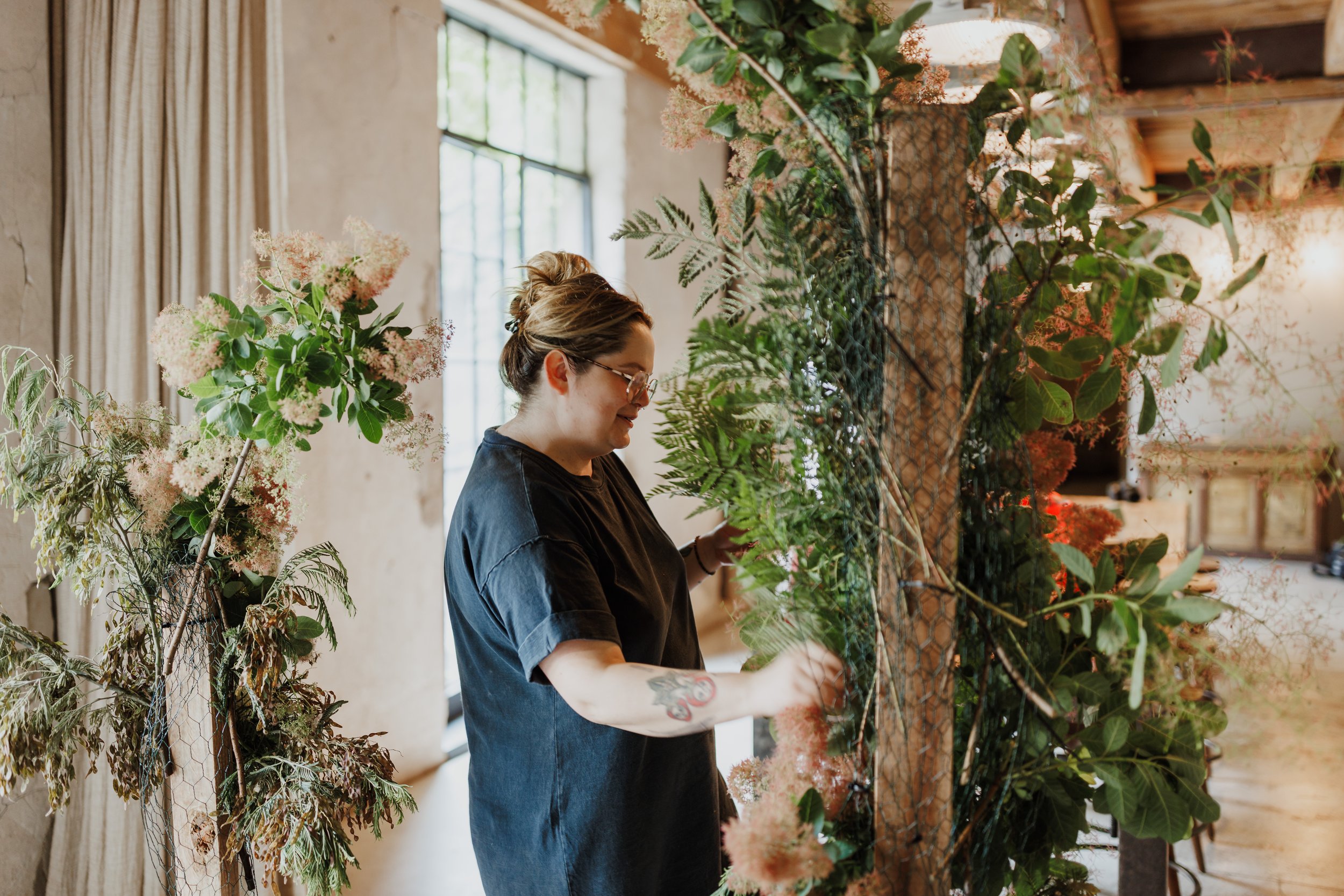Blooms of Love: A Comprehensive Guide to curating Wedding Floral Arrangements
The art of designing wedding floral arrangements is a perfect blend of meeting the couples needs, with the expertise of your wedding florist. From choosing the right blooms to creating cohesive arrangements, this comprehensive guide takes you through the intimate process of crafting unforgettable floral designs that breathe life and color into every moment of the wedding day.
The first step in creating stunning wedding floral arrangements is understanding our couple's vision. A successful floral design is a harmonious reflection of the couple's style, personality, and the overall theme of the wedding. This involves an in-depth consultation, mood boards, color chips, and discussions to capture the essence of their dream day.
Initial Consultation: We begin the journey by chatting over the phone with our couple to discuss their vision. Ask about their preferred color palette, favorite flowers/flowers to avoid, and the overall atmosphere they want to create. Are they envisioning a romantic garden party, a modern and sleek affair, or a rustic countryside celebration? Understanding these key elements is crucial for shaping the floral design.
Mood Boards and Inspiration: We create mood boards that visually represent the couple's preferences. This collaborative process allows them to see potential color schemes, suggested flower varieties, and styles. It's a creative exchange that helps refine the vision and ensures that everyone is on the same page before diving into the details of the design.
Once the couple's vision is crystal clear, it's time to delve into the world of flowers. Choosing the right blooms involves considering factors such as seasonal availability, color coordination, and the overall aesthetic. Here's how we navigate this blooming stage of the process:
Seasonal Considerations: Each season brings its own array of blossoms. For a spring wedding, think of tulips, peonies, poppies, and flowering branches. Summer may feature vibrant dahlias and heirloom garden roses, while autumn offers a palette of rich, warm hues with fall foliage, dahlias, seed pods, and chrysanthemums. Winter weddings can embrace the elegance of amaryllis, roses, and evergreen accents.
Color Coordination: Harmonizing the color palette is crucial for a cohesive and visually pleasing floral design. Consider the overall theme and color scheme of the wedding, ensuring that the chosen blooms complement the venue and the couple's chosen colors. Playing with various shades and textures can add depth and interest to the arrangements.
With the floral palette decided, it's time to bring the arrangements to life. This involves considering the various floral elements that contribute to the overall design, from bouquets to centerpieces and everything in between.
Bridal Bouquet: The bridal bouquet is a focal point of the floral design. It should seamlessly integrate with the bride's gown while reflecting her personal style. Consider the shape, size, and texture of the bouquet, ensuring it enhances rather than overpowers the bridal ensemble. We’re looking to create a bouquet that acts as an accessory.
Bridesmaid Bouquets: Bridesmaid bouquets should complement the bridal bouquet while maintaining a distinct identity. This is an opportunity to introduce variations in size, color, or flower varieties, adding depth and visual interest to the bridal party.
Centerpieces: Centerpieces anchor the floral design throughout the venue. Consider the size and shape of the tables, the overall aesthetic, and the couple's preferences when designing centerpieces. Tall arrangements can add drama, while low arrangements encourage conversation and intimacy.
Ceremony Decor: Floral arrangements for the ceremony space create a captivating backdrop for exchanging vows. Consider altar arrangements, aisle decor, and any additional floral elements that enhance the ambiance. This is an opportunity to carry the theme from the ceremony to the reception seamlessly.
Reception Decor: Transitioning from the ceremony to the reception involves adapting the floral design to the new space. Table centerpieces, entrance arrangements, and any additional decor should flow seamlessly, creating a cohesive and enchanting atmosphere for the celebration.





Creating beautiful wedding floral arrangements is an art, but it's also a task that requires careful budgeting. Here are practical tips for navigating the financial aspect of floral design:
Prioritize: We work with the couple to identify their floral priorities. The bridal bouquet and key focal points often take precedence, while other areas may allow for more budget-friendly options. Prioritizing ensures that the most important elements receive the attention and budget they deserve.
Seasonal and Local Blooms: Opting for seasonal and locally sourced blooms can significantly impact the budget. Seasonal flowers are often more readily available and cost-effective, while local varieties can reduce transportation costs. This approach not only supports local businesses but also ensures a fresher and more sustainable floral selection.
Flexible Design: Maintain flexibility in the design to accommodate budget adjustments. Be open to substitutions or modifications based on cost considerations without compromising the overall aesthetic. A skilled florist can work wonders in adapting the design to meet budget constraints while preserving the beauty of the arrangements.
Reuse and Repurpose: Explore opportunities to reuse floral elements from the ceremony in the reception space. Aisle arrangements can adorn the head table, ceremony backdrop can be moved behind the sweetheart table, etc. Repurposing floral elements not only maximizes the budget but also creates a cohesive design narrative throughout the celebration.
Beyond the creative aspects, designing wedding floral arrangements requires attention to practical considerations to ensure a seamless execution on the big day. Here's how we navigate logistical aspects:
Venue Coordination: We like to collaborate closely with the venue coordinator to understand any restrictions or guidelines for floral installations. Some venues may have limitations on certain types of arrangements or require specific setup and teardown times.
Delivery and Set Up: We plan the logistics for floral delivery and set up well in advance. We ensure that arrangements arrive in optimal condition and allocate sufficient time for setup before the wedding festivities begin. Coordination with the venue and other vendors is key to a smooth execution.
Transportation: Transportation plays a crucial role in preserving the freshness and integrity of floral arrangements. We properly secure and protect arrangements during transit to prevent damage. Depending on the location, we’ll opt for a regular van rental or refrigerated truck if we’re flowering somewhere remote and warm (ie California, Mexico, and desert destinations).
Seasonal Considerations: Be mindful of the weather and its potential impact on floral arrangements. Extreme temperatures, whether hot or cold, can affect the freshness and longevity of blooms. We implement measures such as hydration solutions for flowers and protective coverings during transport to mitigate these challenges.
While some couples may opt for a DIY approach (we never recommend this), collaborating with a skilled florist can elevate the wedding floral design to new heights. A professional brings expertise, creativity, and industry knowledge to the table, ensuring a seamless and visually stunning execution.
Initial Consultation: Schedule an initial consultation with the chosen florist to discuss your vision, preferences, and budget. This meeting sets the foundation for a collaborative and communicative partnership.
Portfolio Review: Review the florist's portfolio to assess their style, versatility, and previous work. This step helps confirm that their aesthetic aligns with your vision and ensures confidence in their ability to execute the desired floral design.
Communication: Open and transparent communication is key throughout the design process. Regular updates, discussions, and the sharing of ideas contribute to a collaborative and positive experience. A skilled florist will welcome feedback and adjustment requests to ensure the final design exceeds expectations.
Timeline and Deadlines: Establish a clear timeline with the florist, outlining key milestones from design conception to the wedding day. Clearly defined deadlines for consultations, floral trials, and final adjustments contribute to a well-organized and stress-free process.
Floral Trials: Consider scheduling floral trials to see mock-ups of the proposed arrangements. This allows you to visualize the design, make any necessary adjustments, and ensure that the final product aligns with your expectations.
Overall, designing wedding floral arrangements is a multifaceted and deeply creative process that requires a delicate balance of artistry, collaboration, and practicality. From understanding our couple's vision to selecting the right blooms, creating cohesive arrangements, and working within budget constraints, every step contributes to the seamless execution of a visually stunning and emotionally resonant celebration.
As couples embark on this journey, whether in pursuit of the perfect bridal bouquet or the most enchanting reception centerpieces, they are engaging in an art form that transcends mere decoration. Wedding floral arrangements have the power to encapsulate the essence of love, creating an immersive and unforgettable experience that blooms with beauty and significance on one of life's most momentous occasions.




